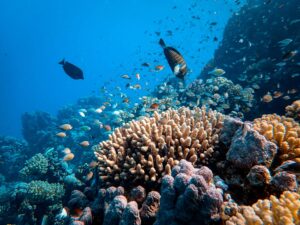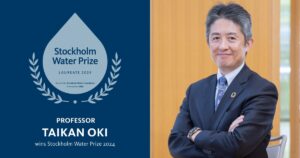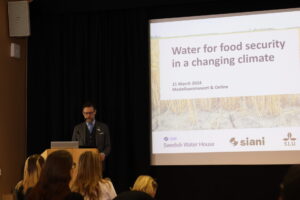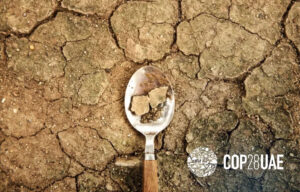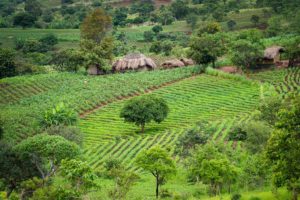SIWI and Elsevier publish report on research in the water-food nexus
Water research thrives as new report highlights spiralling growth year on year
New analysis on water research highlights the role interdisciplinary and international collaboration plays in the production of high impact research
Research into water is growing faster than the average 4 per cent annual growth rate for all research disciplines, claims a new report presented by Elsevier and SIWI during the 2012 World Water Week in Stockholm. The report, “The Water and Food Nexus: Trends and Development of the Research Landscape” analysed the major trends in water and food-related article output at international, national and institutional levels. Elsevier and SIWI worked closely together on creating the report, which is based on the analysis of Scopus citation data by Elsevier’s SciVal Analytics team.
The growing discrepancy between supply and demand for water is becoming more challenging each year. Developments in water research have the potential to help solve this issue. The report examined the dynamics of global water research between 2007 and 2011, focusing on two strands of research; water resources research, referring to natural and social science studies on water use, and food and water research focusing on the study of water consumption and recycling to produce food. The latter strand is an important theme in this year’s World Water Week thematic focus: Water and Food Security.
Key findings from the report include:
• Exploding research landscape
There has been a dramatic growth of water research, with both strands of research growing above the 4% average for all research disciplines. Water resources research is growing at a rate of 9.2% per year, while research into food and water is growing by 4.7% each year. Research is also becoming more collaborative and interdisciplinary, with a dramatic rise in publications from the fields of computer science and mathematics in water resource research; while research from fields within the social sciences have become the fastest growing fields in the food and water research strand.
• United States leads research output, but for how long?
Research output is the highest in the United States in both water resources and food and water research, but growth between 2007 and 2011 is low. On the other hand, China is experiencing ongoing growth in water research output and, if its trajectory continues, it could be the leading producer of water research within the next few years. Other countries experiencing high growth rates in both water resources and food and water research include Malaysia and Iran.
• Collaboration holds the key for high impact research
More than half of all articles published on water research are based on international collaboration. Interestingly, the most impactful research, for this study defined as average citations per paper, did not
come from the countries that produced the most research, nor from those with the highest growth rate. Instead, the most impactful papers were found to come from the Netherlands, Switzerland, Denmark and Belgium for water resource research and Sweden, Switzerland, Great Britain, the Netherlands and Denmark for food and water research. In addition, a strong correlation was found between the level of international and interdisciplinary collaboration and the impact, with greater collaboration leading to higher impact research.
“The aim of this report is to provide a transparent view of the water research landscape and the key players within the field,” said Dr. Christiane Barranguet, Executive Publisher of Elsevier Aquatic and Green Sciences. “We found that the research landscape is becoming more dynamic, complex and, in some places, fragmented. We also found that collaboration is a key factor in producing high impact research. As such there is a greater need for collaboration – across borders and even between academia and industry – in order to grow and enhance the field.”
Commenting on key trends identified, Mr. Per Bertilsson, Acting Executive Director at Stockholm International Water Institute said, “The report clearly shows that water research is growing in new places and becoming increasingly interdisciplinary. The entire water community now has a great opportunity to better leverage the knowledge creation on water research that is emanating from new places and new partnerships.”
About Elsevier
Elsevier is a world-leading provider of scientific, technical and medical information products and services. The company works in partnership with the global science and health communities to publish more than 2,000 journals, including The Lancet and Cell, and close to 20,000 book titles, including major reference works from Mosby and Saunders. Elsevier’s online solutions include SciVerse ScienceDirect, SciVerse Scopus, Reaxys, MD Consult and Nursing Consult, which enhance the productivity of science and health professionals, and the SciVal suite and MEDai’s Pinpoint Review, which help research and health care institutions deliver better outcomes more cost-effectively.
About the Stockholm International Water Institute
The Stockholm International Water Institute (SIWI) is a policy institute that generates knowledge and informs decision-making towards water wise policy and sustainable development. SIWI performs research, builds institutional capacity and provides advisory services in five thematic areas: water governance, transboundary water management, water and climate change, the water-energy-food nexus, and water economics. SIWI organises the World Water Week in Stockholm – the leading annual global meeting place on water and development issues – and hosts the Stockholm Water Prize, the Stockholm Junior Water Prize and the Stockholm Industry Water Award.
